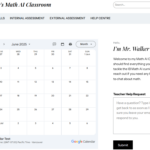Social Media
As of a few weeks ago, social media has been under fire for alleged the use of algorithms designed to drive up users’ screen time. The reason social media apps aim to increase a user’s screen time is for the opportunity to show them more ads, and more ad exposure equals more revenue for these companies (McFarlane 2020).
In case you aren’t using Netflix or aren’t up to date on current social media happenings, this issue has been brought to our attention by a group of “whistleblowers” who have worked for various social media companies. Their stories were shared in the Netflix documentary “The Social Dilemma.” The trailer is below.
In my EDCI 336 lecture last Friday, we had Jesse Miller (@MediatedReality on Twitter) speak to use on the impact of Social Media in education and some of the privacy and safety implications of its use. During the phase that preludes our zoom lectures where students are joining the zoom room, one of my peers asked Jesse Miller to comment on the film above. He cautioned that he had several colleagues who were interviewed for this documentary but whose commentary was not included in the final cut because what they had to say did not fit their narrative. The narrative being that social media in its current form is dangerous and predatory, especially for children and youth.
This raises a few important questions: can social media have a positive impact on society and, if so, can it be used in education? In our highly polarized world, many believe in absolutism. Either social media is good or it is bad. I don’t think this distinction is particularly helpful for anyone going into a career in education since social media is inevitable.
When I went to high school many moons ago, cell phones were just entering the classroom and teachers fought to keep them in our pockets. How shocked I was when I had my first school visit at Lambrick Park Secondary and not only were students using their phones during their class, they were being encouraged by their teachers to use them! This is how we should approach the use of social media in education; students are going to use it anyways, how do we use it in a positive way that furthers their education?
An interesting application of social media that I’ve seen in the classroom environment was students using Facebook Messenger to talk about course work and answer each other’s questions. They also used Google Drive to share past assignments, practice exams, and other pertinent information. At Lambrick Park Secondary, the biology teacher that I’m observing records all of his lectures and posts them on his google classroom, and just the other day he praised his students for sharing his videos with students at other schools.
It’s important to recognize that all of this was done by students on their own initiative. It really makes you wonder how powerful a tool social media could be for educators if they found ways of weaving it into their teaching philosophies and practices?
Privacy
But if educators are to turn social media as an educational tool, they should be aware of their limitations when it comes to privacy and safety. Should you add students on Instagram and comment on their photos? Should you call students and discuss their personal lives? Certainly, the answers to these questions are a resounding NO, but in this connected landscape, how available should educators make themselves to their students? Can you share your personal email? How about your cell phone?
Below is a list of ways that educators can comminute with their students that preserves privacy and safety:
- School or professional email
- Discussions through Google Classroom or an LMS
- Remind, an app that allows text conversation without sharing phone numbers
References
McFarlane, G (2020, Feb 7). How Facebook, Twitter, Social Media Make Money From You. Investopedia. Link.





